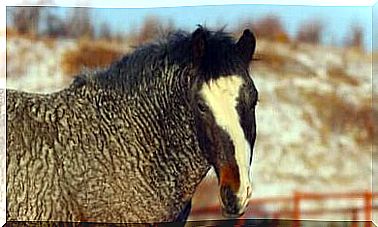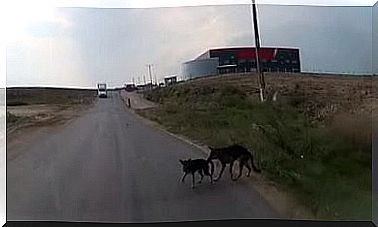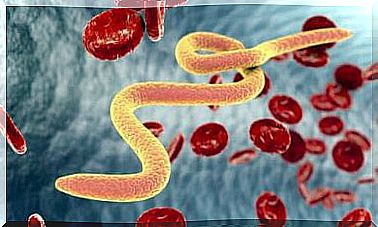What Is Canine Imprinting?

The imprinting or canine imprinting is the period of time in which the puppy is more receptive to the stimuli that surround him. This time interval is fundamental for learning and training the animal’s behavior.
This period varies from birth to twelve weeks of the puppy’s life. Also, the most sensitive stage is between the second and seventh week. If you want to learn more about this period and how it affects your dog’s education, read on.
Dog imprinting or canine imprinting
From birth, puppies receive stimuli from their mother and the rest of the siblings. The lactation period and time with the mother and siblings are very important and influence the character of the dog in its adult life.
During the first few days, the mother will be in charge of taking care of the puppy full time. However, it is also good for the newborn to have some contact with people – even for short periods of time. That way, the human presence at later stages will not be foreign to him.
In six or eight weeks, the adoption event usually arrives, when the puppy is separated from the litter to go to its new home. From then on, the socialization period begins: the most sensitive phase in the dog’s life.

dog socialization
The socialization stage coincides with the natural age at which the mother wean the puppies and teach them some independence. Anyway, the separation and the change of environment to live with humans accelerates the socialization process in young dogs.
At this stage, the dog must know all the possible stimuli that will be present in his life. Some of them are as follows:
- The different types of people : children, adults, elderly, men or women. In short, all the ethnic or physiological variations of the human spectrum.
- Other species : especially if you are going to live with other pets such as cats or birds.
- Sounds, smells and lights from outside.
- Bicycles, cars or buses: moving vehicles that can pose a danger to the dog during walks.
In addition, this step is ideal for teaching the dog the basic commands that he will continue to use for the rest of his life: come, sit, lie down or stay, among many other commands of fundamental importance.
After socializing with other dogs, there is a period of detachment in which the dog will test its own independence. This is a natural phase that should not be interrupted, as it is good that the animal can only face certain situations.
The importance of imprinting in relationships with other dogs
Many of the behavior problems among many dogs are related to the imprinting they had during childhood. As already mentioned, in the first weeks of life the animal “learns to be a dog”, but this does not mean that it will know how to relate in adulthood.
The time spent with the mother and siblings influences how the animal will socialize with other dogs. But during the socialization phase it is important that the dog has its first encounters and learns the canine language.
A good imprinting to have a stable dog
In the canine imprinting stage , positive and negative experiences can influence a great deal. For example, a bad experience can cause rejection or fear the next time the animal faces the same experience.
These fears can become very difficult phobias to deal with in the future, so it is essential to take special care in education and always use positive reinforcement when you want to normalize a situation, such as going to the vet, brushing the fur, bathing and many other activities routine.
The good handling of the puppy during the imprinting period translates – most likely – into a balanced and stable adult dog, able to face everyday situations, interacting calmly with other dogs, animals and people, and trained to avoid behavior destructive.
Does imprinting exist in other animals?
Imprinting also occurs in other animals, as demonstrated by Konrad Lorenz in his geese experiment. Its definition is the same applied to dogs, as it corresponds to a sensitive critical period in the life of the living being.
Konrad studied the behavior of geese and observed that the young would instinctively unite in front of the first moving object they saw in the first few hours after the eggs hatch. The cubs followed any figure Lorenz placed in front of them, including himself.

a brand for life
In short, we can conclude that the imprinting is the starting point of animal learning because through this phenomenon is generating a bond between the mother – or the cuidador- and offspring.
Thanks to this, and through observation and imitation – education and training in the case of domestic animals -, the newborn learns the basic aspects for its survival and well-being for the rest of its life.









